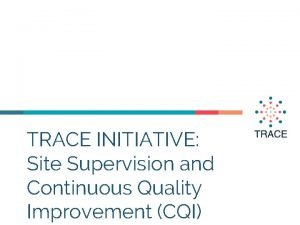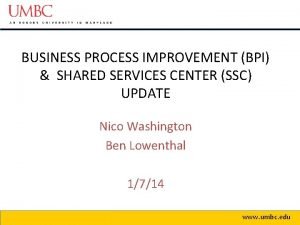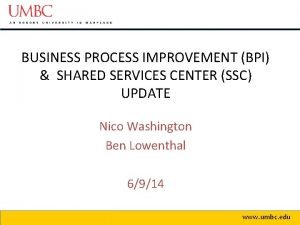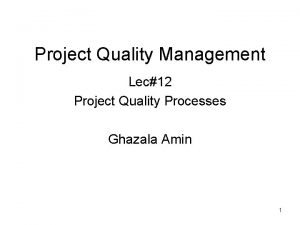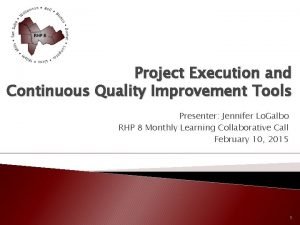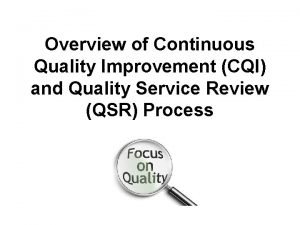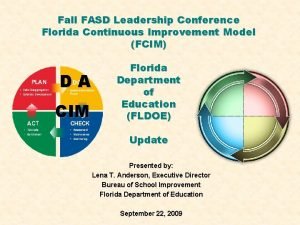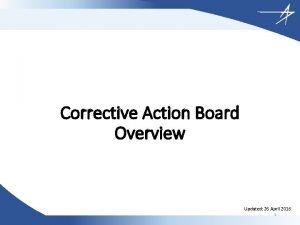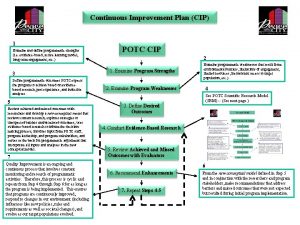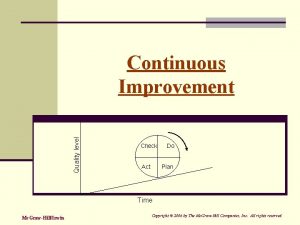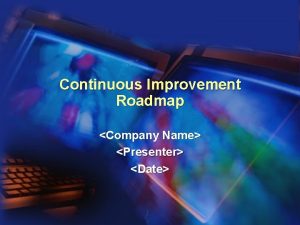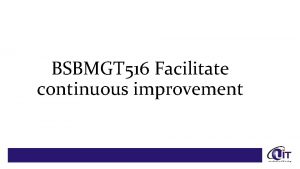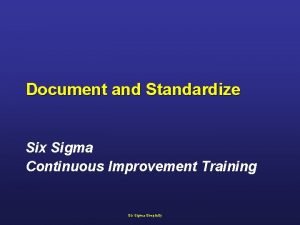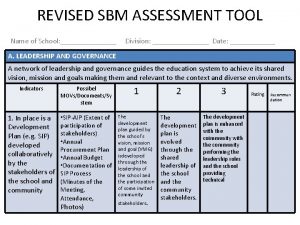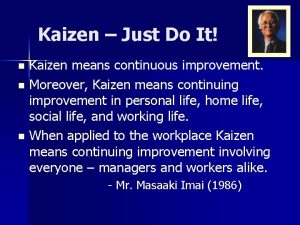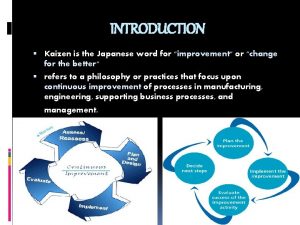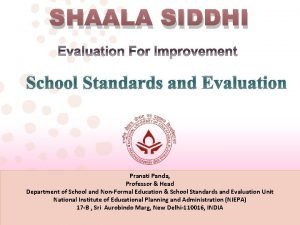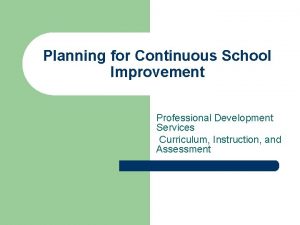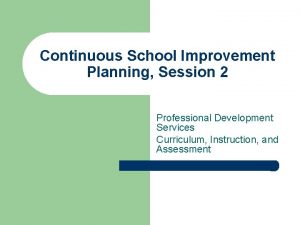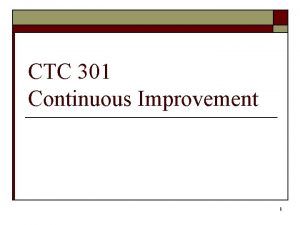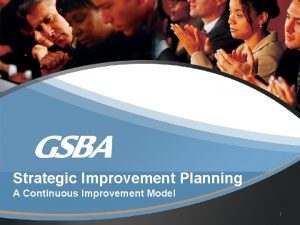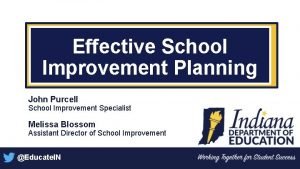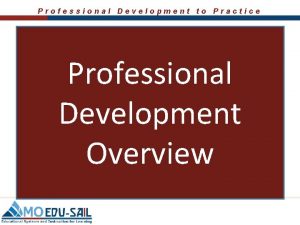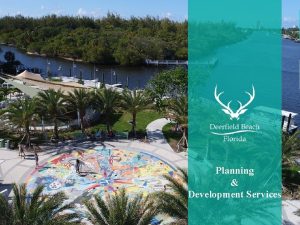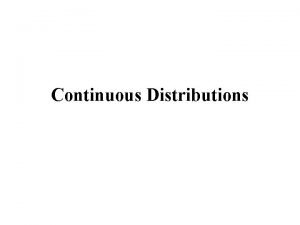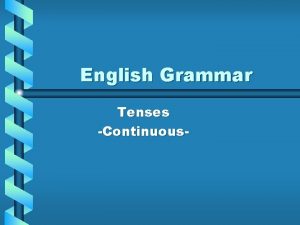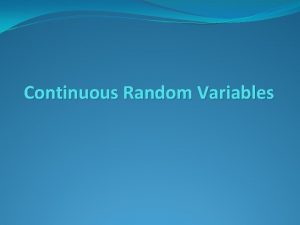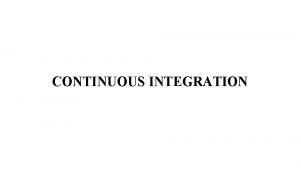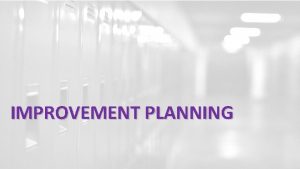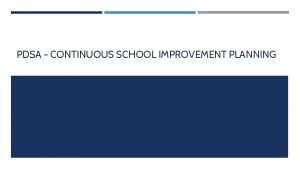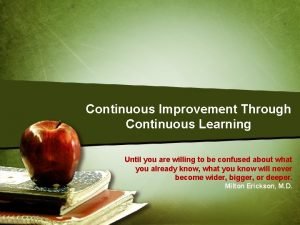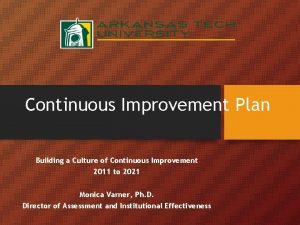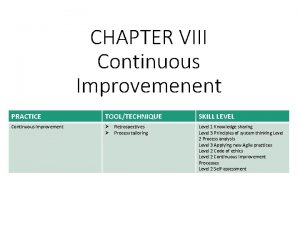Planning for Continuous School Improvement Professional Development Services





















- Slides: 21

Planning for Continuous School Improvement Professional Development Services Curriculum, Instruction, and Assessment

Outcomes l l l To understand the importance of utilizing multiple measures of data. To understand the systematic process for continuous school improvement planning. To understand the HISD SIP process and requirements.

Pre-Conditions for School Improvement l l l Instructional Coherence Shared Vision for School Improvement Data Driven Decision Making


Multiple Measures of Data l l Demographics Perceptions Student Learning School Processes

Demographics Because trends have a clear direction, instead of causing turbulence, they actually help reduce it because they have a significant amount of predictability. Joel Barker

Demographics l l Schools should begin the planning process by setting the context What we believe turns into expectations and then action Longitudinal trends are important for planning Implications for professional learning and leadership

Perceptions l l Perceptions are important because they are someone’s reality. Informs behavior of the staff, students, and parents l For table conversation--What are some of the perceptions we can gain regarding students? Staff? Parents? l Staff values and perceptions impact behavior Perceptions have an implication for planning l

Student Learning Why is it Important? l l l l l Measures student group proficiency Assess individual or group achievement Assess added-value progress Guide curriculum development or revision Improve instruction Understand which programs are getting the results we want Accountability PLC Key Questions Formative assessments

School Processes Improvement is not achieved by focusing on results, but by focusing on improving the systems that create the results. National Leadership Network

School Processes l l l Most difficult to measure Evaluate impact of curriculum, instruction, assessment, and interventions What processes will create the results we want?

Evaluation of School Processes l l Review the continuum and determine where your school is in each area. Pair/share- Discuss your reflections with a partner.


Intersection of Data– Moving from Random Acts of Improvement to Focused Acts of Improvement l l l What processes or programs work best for different groups of students measured by student learning results? What impact do demographic factors and student attitudes about the learning environment have on student learning? Are all groups of students represented in the different programs and processes offered by the school?

Table Activity l Categorize each of the activities as Input, Process, or Outcome Input Data elements that describe the “givens” that are usually beyond our immediate control.

Table Activity (con’t) Process Elements that describe the actions learning organizations plan for and implement to get the outcomes they are striving to achieve, given the input. Outcome The data elements that describe the results of a learning organization’s processes.


The Process l l l Review of flow chart questions HISD planning process HISD template


Resources l l l Victoria Bernhardt, Using Data to Improve Student Learning Du. Four, Eaker, and Many, Learning by Doing List of resources on handout aligned to district initiatives and framework

Next Steps l l l Gather and analyze demographic data to extent possible Discuss mission, vision, and values If possible, determine perceptions of stakeholders Analyze student achievement data Develop first draft of 3 SMART goals
 Continuous quality improvement program planning worksheet
Continuous quality improvement program planning worksheet Interrupted action in the past
Interrupted action in the past Future simple in the past
Future simple in the past Shared services process improvement
Shared services process improvement Umbc ap credit chart
Umbc ap credit chart Jrotc bravo company mottos
Jrotc bravo company mottos Continuous improvement
Continuous improvement Continuous quality improvement plan example
Continuous quality improvement plan example Define continuous quality improvement
Define continuous quality improvement Florida continuous improvement model
Florida continuous improvement model 4 blocker
4 blocker Cip 1
Cip 1 Continuous improvement check sheet
Continuous improvement check sheet Itil csi 7 steps
Itil csi 7 steps Continuous improvement roadmap
Continuous improvement roadmap Bsbmgt516
Bsbmgt516 Continuous improvement documentation
Continuous improvement documentation School based accountability assessment framework tools
School based accountability assessment framework tools Just do it kaizen
Just do it kaizen Nba criteria 7 continuous improvement
Nba criteria 7 continuous improvement Japanese word for continuous improvement
Japanese word for continuous improvement Shaala siddhi school evaluation composite matrix
Shaala siddhi school evaluation composite matrix
